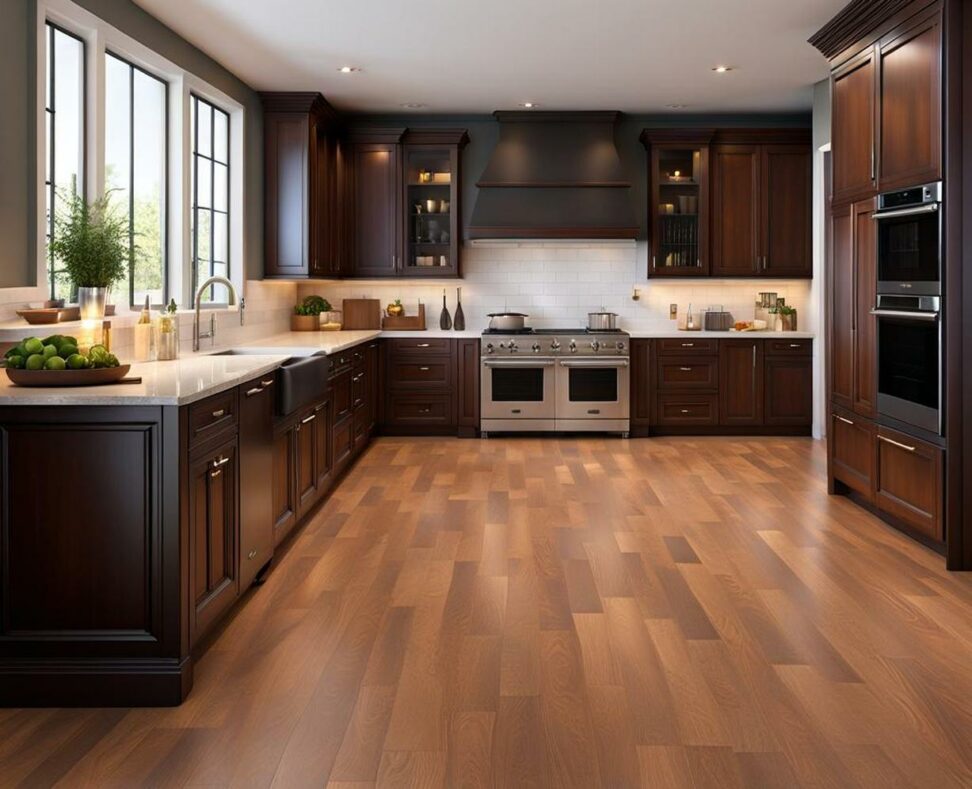Choose a Harmonious Blend of Floor and Cabinet Colors for Your Kitchen
Renovating or redecorating your kitchen can be an exciting endeavor, but choosing complementary colors for your floors and cabinets requires careful thought and planning. The right color combination can make your kitchen feel cohesive, spacious and filled with design inspiration. Conversely, clashing or mismatching colors can create a disjointed, chaotic look and feel. By taking the time to get your palette just right, you'll end up with a kitchen that delights the senses and promotes functionality.
With some expert guidance and a dash of creativity, you're sure to craft a color scheme that will make your kitchen shine.
Consider the Impact of Lighting on Color Perception
Before finalizing any paint chips or flooring samples, examine how natural and artificial light might alter color tones in your kitchen. Bright sunlight often makes colors appear lighter and cooler, while artificial lighting can skew colors to be darker and warmer. Lighter paints and woods help prevent shadows in dark spaces, opening up the room. Meanwhile, bold shades show best in well-lit kitchens.
Test out paint colors at different times of day when possible. And install any new lighting fixtures first so you can visualize finished colors accurately.

Choose Durable, Neutral Tones for High-Traffic Areas
Kitchen floors tend to get more wear and tear than other spaces. Spills, scuffs and pet accidents can quickly ding up floors that aren't resilient. Neutral concrete-look vinyl plank flooring hides stains remarkably well. And glossy porcelain or ceramic tile resists scratches better than real wood.
For cabinets, water-resistant thermofoil doors repel moisture from the sink and dishwasher. And satin or semi-gloss paint avoids nicks better than flat finishes while still hiding flaws in budget materials.
Match or Contrast Flooring and Cabinets to Set the Tone
A seamless look comes from complementing your flooring and cabinet colors. For example, light oak cabinets paired with matching oak-look plank floors makes the kitchen feel spacious. Contrasting shades can also look bold and modern, like matte black cabinets atop concrete-effect tile.
Traditional schemes may include muted neutrals for both components. Contemporary spaces can handle more daring pairings like a navy blue island and butcher block countertop against blonde wood underfoot.
Select Floor and Cabinet Colors that Enhance the Walls
Don't choose your flooring and cabinetry in isolation. The wall color sets the foundation for the whole room's palette. Warm beige walls bring out the richness of espresso cabinetry and a slate tile floor. Cool gray walls make white cabinets and light hardwood floors pop.
Flooring and cabinet samples look different against various wall colors. Get paint swatches of top wall color contenders so you can visualize the full space.
Consider Color Psychology for the Desired Mood
Color psychology examines how different hues affect our moods. Energizing shades like tomato red or sunflower yellow promote productivity and conversation in gathering spaces like kitchens. Tranquil blue or sage green foster relaxation in breakfast nook areas.
Remember - varying factors like lighting, undertones, textures and placement also influence a color's psychological effects. So be sure to view flooring and cabinetry together before deciding on psychological appeal.
Select Consistent Tones for a Seamless Look
Using colors in the same family unites floors, walls, cabinets and counters seamlessly. For example, the undertones in light oak flooring are echoed in medium brown cabinetry and cream colored granite countertops. This creates a smooth, integrated aesthetic.
Abruptly changing colors from surface to surface tends to look disjointed. Transition gradually between color layers instead for a holistic, open kitchen design.
Add Pops of Color With Rugs, Curtains and Wall Art
While flooring and cabinetry stay in place for years, you can easily rotate other accessories. Incorporate color through patterned throw rugs or sheer curtains tinted in your accent shades. Swap out decorative plates or art pieces in coordinating colorways when you need a refresh.
Citrine and fuchsia bar stools inject brightness without total commitment. Over time, notice which hues you consistently gravitate toward, and let that guide permanent decisions.
Select Timeless, Neutral Colors to Boost Resale Value
Sticking with versatile, neutral colors like white, gray and taupe for big surfaces increases your home's future resale potential. These flexible tones allow potential buyers to imagine implementing their own vision.
reservational pops of navy, emerald or marigold on backsplashes or accent walls also create character without diminishing mass appeal. Include those personality-packed accents through paint or tile to avoid major renovation down the road.
Consult the Experts for Personalized Guidance
Meeting with kitchen designers helps tailor your color scheme to your precise needs and preferences. Design pros consider the room's dimensions, architecture, lighting and typical usage to recommend complementary shades. Many kitchen showrooms even use visualization tools to show you lifelike previews before purchasing.
Interior designers also provide mood boards styling paint chips, fabric swatches, photos and more to hone in on your dream palette. Their expertise steers you clear of missteps helping you realize the kitchen of your dreams.
Now that you've weighed the key considerations in choosing floor and cabinet colors, it's time to put it all together. Narrow down your preferred shades and style by gathering inspiration images and physical samples you love. Notice any common threads that emerge from options that appeal to you.
From there, embark on finalizing an overall color concept that spans floors, walls, cabinets, counters and accents. Having a unifying vision keeps your kitchen looking curated and intentional instead of haphazard. With a harmonious, holistic palette, your kitchen is sure to be a stunning centerpiece of comfort and creativity for years to come.